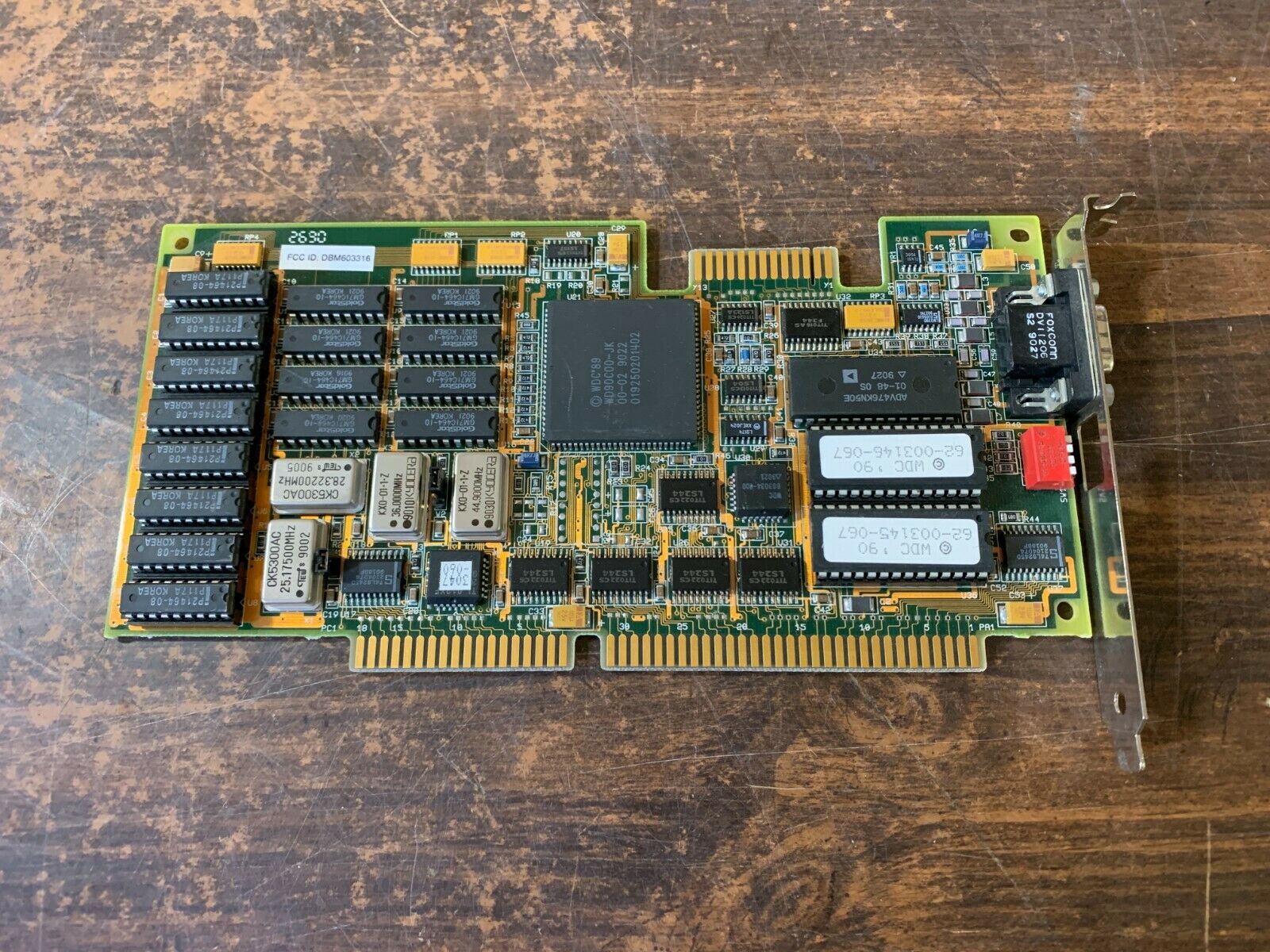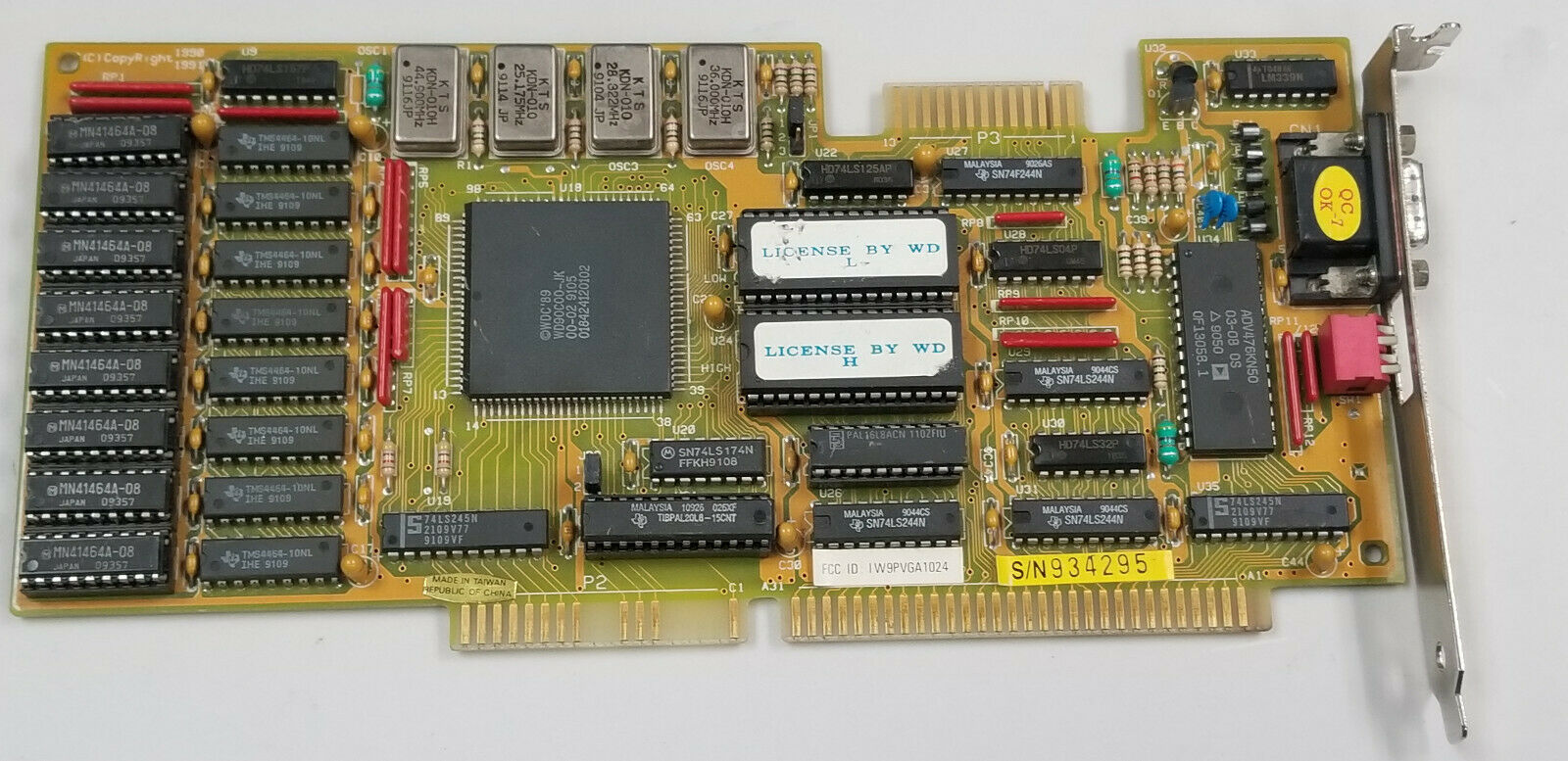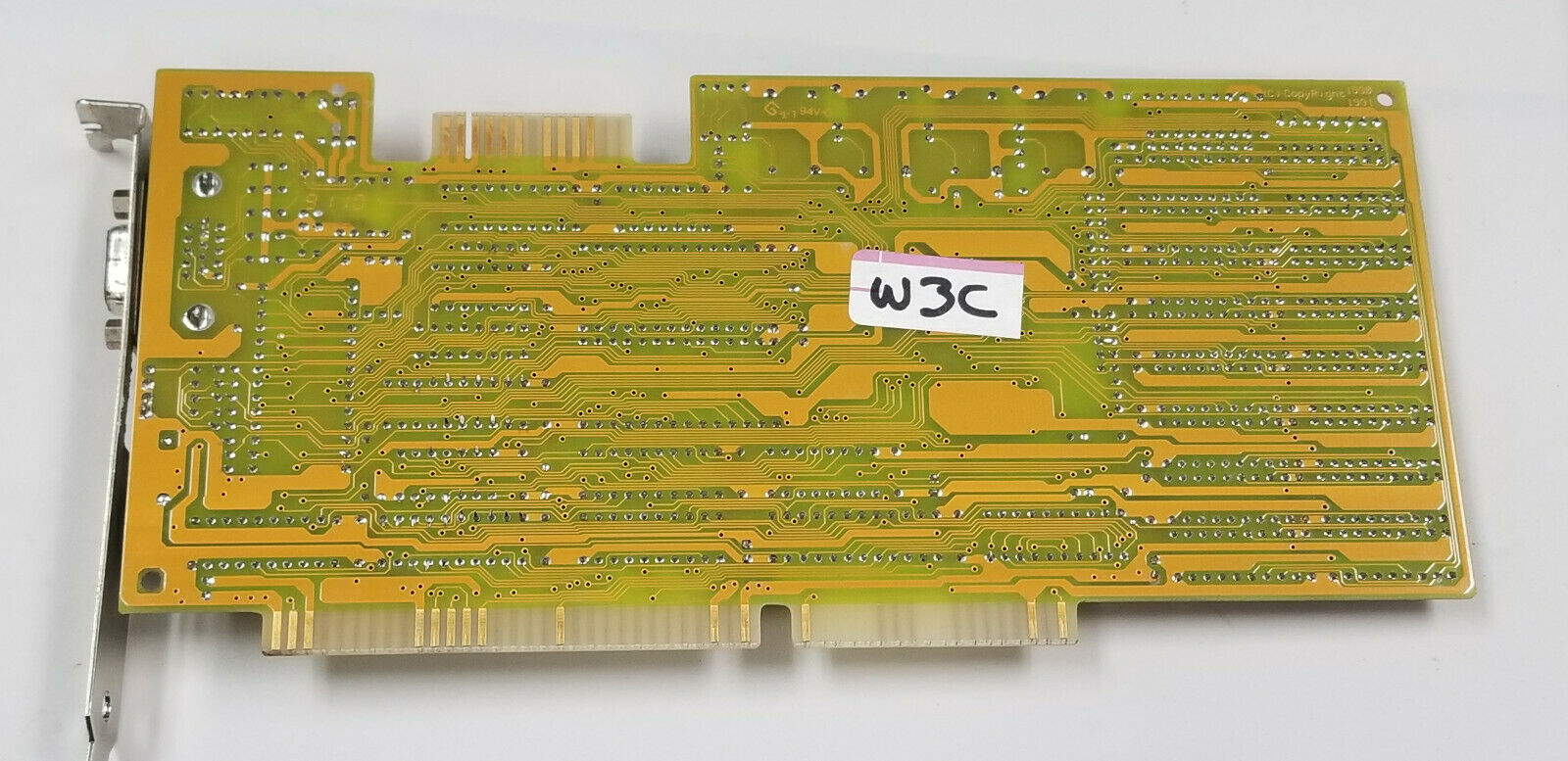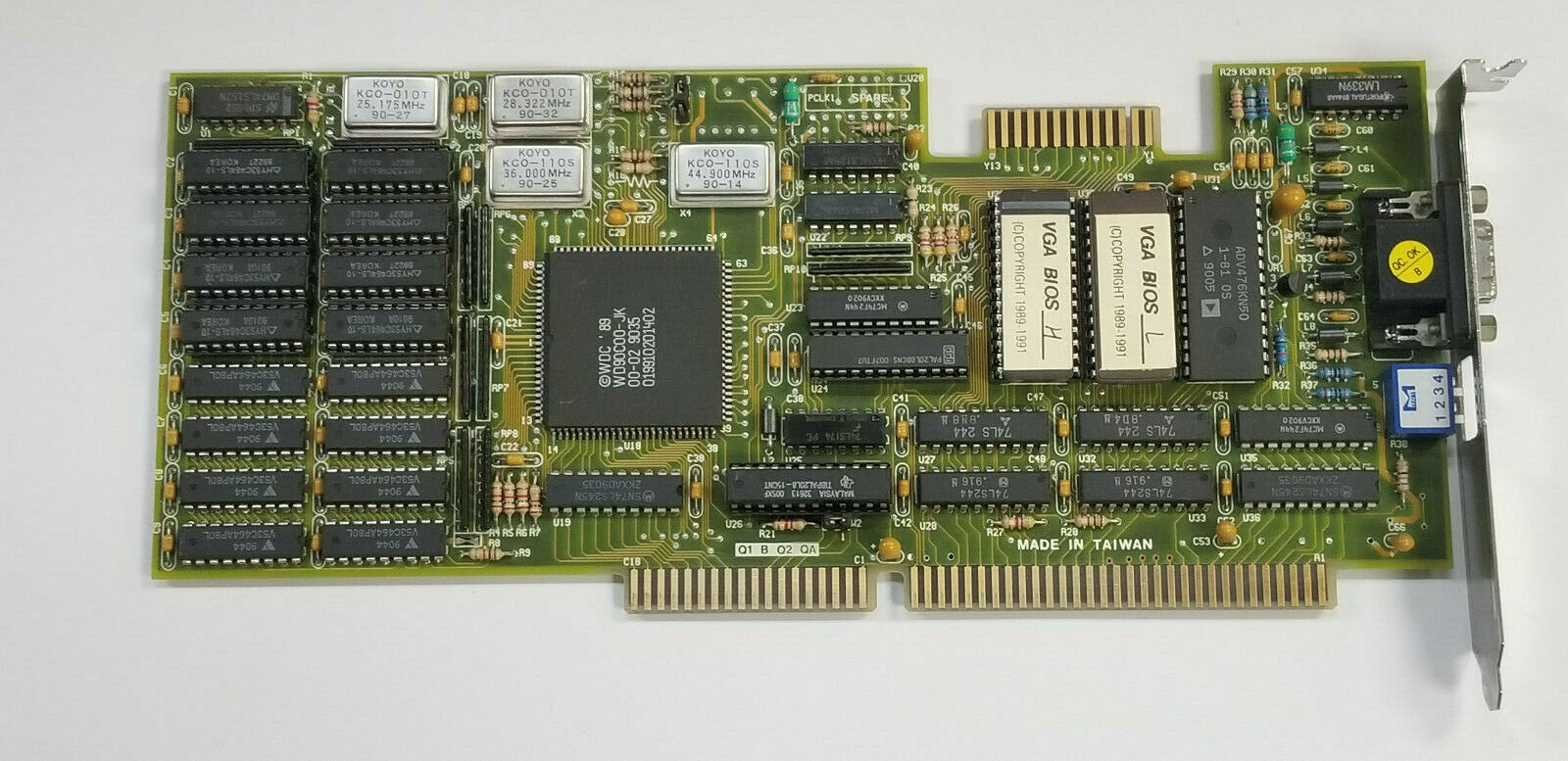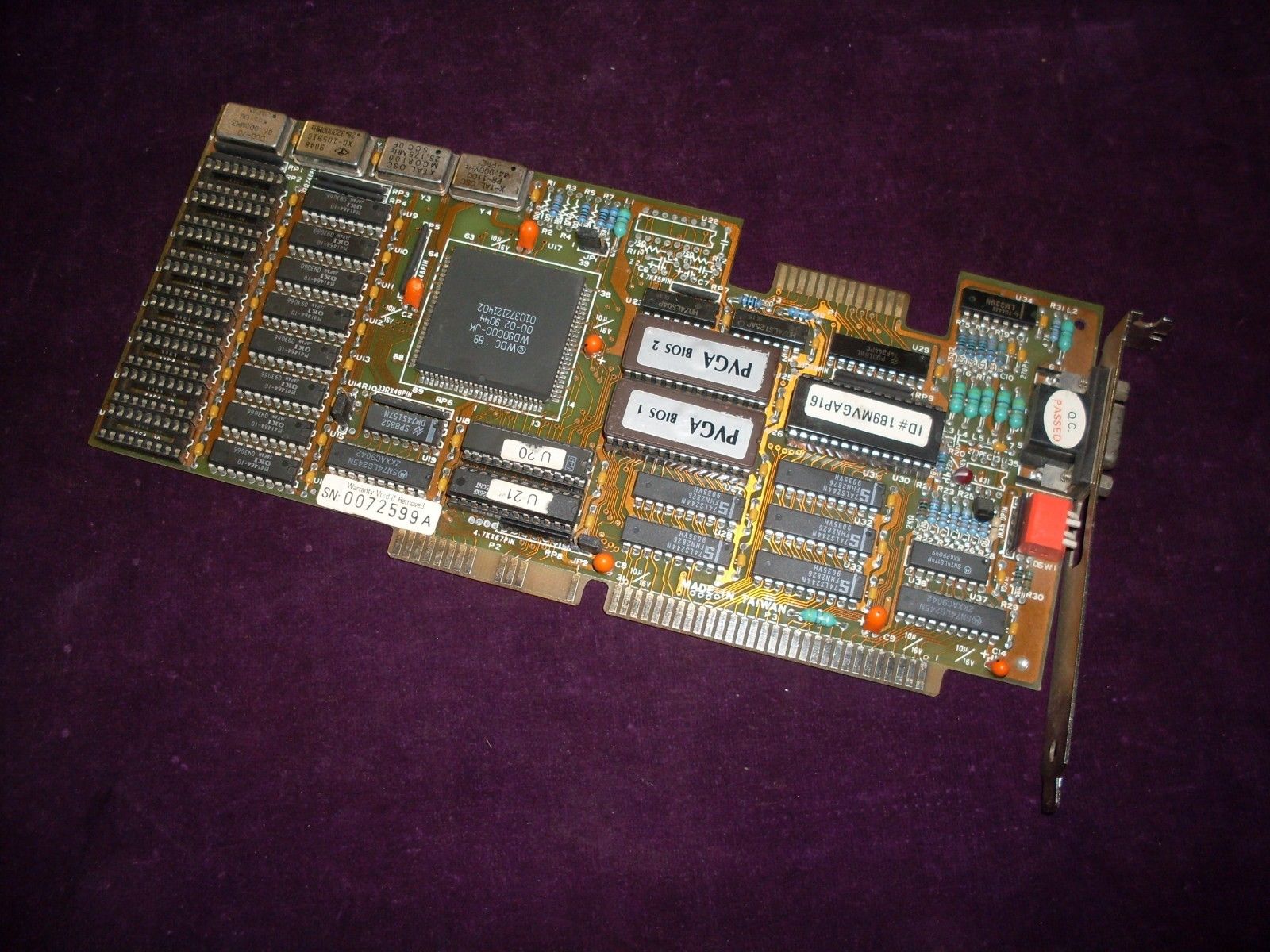PVGA1B (WD90C00)
The WD90C00, originally called PVGA1B, is pin-compatible with the slightly earlier PVGA1A. It supports resolutions up to 1024 x 768 in 16 colours interlaced. It does support this resolution in a non-interlaced mode if an external 56 MHz clock and 80ns or faster DRAMs are installed on the card (a combination of video clock, memory clock, and DRAM speed determines the video modes that are available). It also supports up to 256 colours at 800 x 600 resolution.
|
Released | 1989 |
| Bus | ISA 16-bit | |
| Chipset | PVGA 1B / Western Digital WD90C00 | |
| Standards | MDA, Hercules, CGA, EGA, VGA | |
| Memory | 256 KB, 512 KB or 1 MB (70, 80 or 100ns) | |
| Ports | 15-pin DSUB (RGB analogue out) VGA Feature connector |
|
| RAMDAC | Analog Devices ADV476KN50 (8-bit colour depth, 256 colours), Brooktree Bt471KPJ66 or Brooktree Bt476KPJ50 | |
| RAMDAC Speed | 50 MHz or 66 MHz | |
| FCC ID(s) | DBM603307 (Philips), DBM603316 (Philips), DBM603365 (Philips), IW9PVGA1024 (Datamatic System Co), IHPVGPVS (Brilliant Technology Co) | |
| See Also | PVGA1A |
The PVGA1B ran at a core clock speed of 45 MHz and ran its memory at 56 MHz.
Some cards based on the WD90C00 support 16 DRAMs while others have 8. Due to the way in which memory is organised, there are three memory configurations possible:
| Configuration | Total Memory | Maximum Resolution and Colours |
|---|---|---|
| Eight 64Kx4 DRAMs | 256 KB | 800 x 600 in 16 colours, or 640 x 400 in 256 colours |
| Sixteen 64Kx4 DRAMs | 512 KB | 1024 x 768 in 16 colours, or 640 x 480 in 256 colours |
| Eight 256Kx4 DRAMs | 1 MB | 1024 x 768 in 16 colours, or 800 x 600 in 256 colours |
So if you have only eight DRAM sockets on your card, it will not support 512 KB of video memory, only either 256 KB or 1 MB.
For my findings on the crystal oscillators on PVGA1B/WD90C00 cards, see the section at the bottom of this page called Paradise/WD Crystals.
Click here for the WD90C00 / PVGA1B datasheet.
WD90C00 and PVGA1B chips were used on the following cards:
- Philips unknown model (FCC ID: DBM603307)
- Philips unknown model (256 KB) (FCC ID: DBM603316)
- Philips unknown model (FCC ID: DBM603365)
- Philips VGA 16 (FCC ID: DBM5UEVGAPROF) - these cards can also be found with pin-compatible PVGA1A or WD90C90 instead.
- Colorgraphic Communications Dual VGA+ (1991)
- Brilliant Technology Co. (FCC ID: IHPVGPVS)
- Datamatic System Co. (512KB) (FCC ID: IW9PVGA1024)
Paradise/Western Digital Crystals
Most Paradise and Western Digital SVGA graphics cards come with 3 or 4 crystal oscillators, which are defined as follows:
MCLK is the memory clock and determines the DRAM read/write access timing as well as the system CPU I/O and memory timing. MCLK should be 36 MHz if 120ns DRAMs are installed, and 42 MHz if 100ns or faster DRAMs are installed. This crystal should be of a higher value than VCLK0 and VCLK1.
VCLK0 is the video display clock (aka, the dot clock) for both text and graphics modes. At 25.175 MHz, this displays 640 pixels per horizontal display line.
VCLK1 can either be a second video display clock input or an output to an external clock selection module. If used as an input, 28.322 MHz is used to display 720 pixels per horizontal display line.
VCLK2 (if a fourth crystal is present) can either be a third video display clock input, or an output to an external clock selection module. If present it is usually 42.000 MHz or 44.900 MHz - don't confuse VCLK2 with MCLK. If the card also has a 36 MHz crystal elsewhere, that one is likely to be your MCLK crystal, and the 42 or 44.9 MHz one would be VCLK2. Your card might have a jumper to enable this fourth crystal, i.e. VCLK2.
For 320 or 360 pixel modes, VCLK0, VCLK1 or VCLK2 is divided by 2 by the chipset to derive the pixel clock (PCLK).
Board Revisions
Competition
In the Media
Setting it Up
Downloads
Operation Manual Get in touch if you can provide this missing item! |
Original Utility Disk Get in touch if you can provide this missing item! |
|

